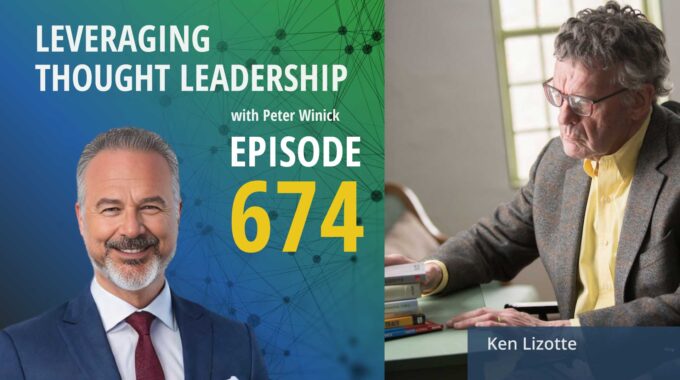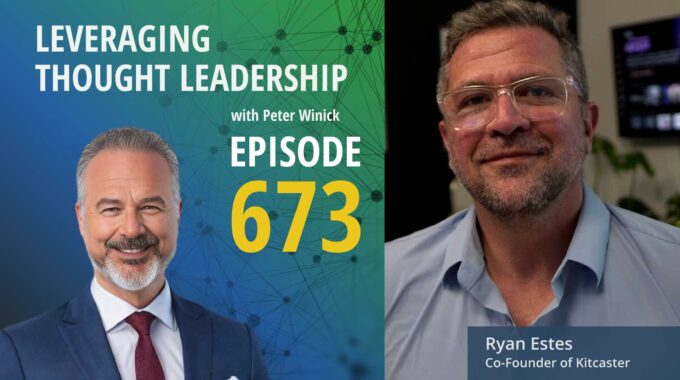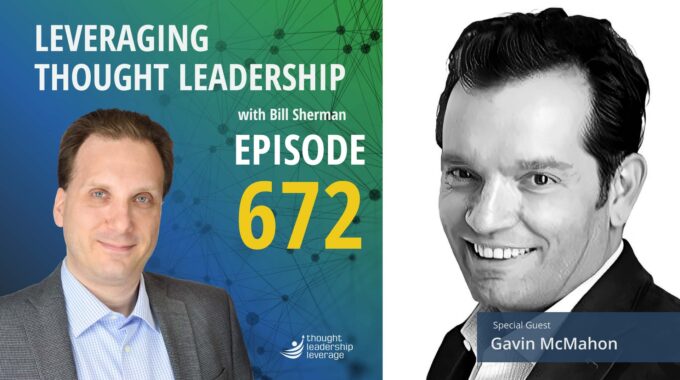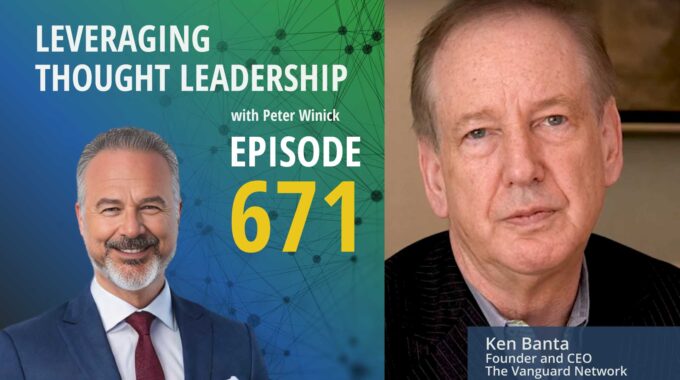Why Great Thought Leaders Don’t Play the Publisher’s Game Peter talks with publishing expert Ken…
Engage, Connect, and Be Understood: Key Principles for Thought Leaders | Andrea Sampson
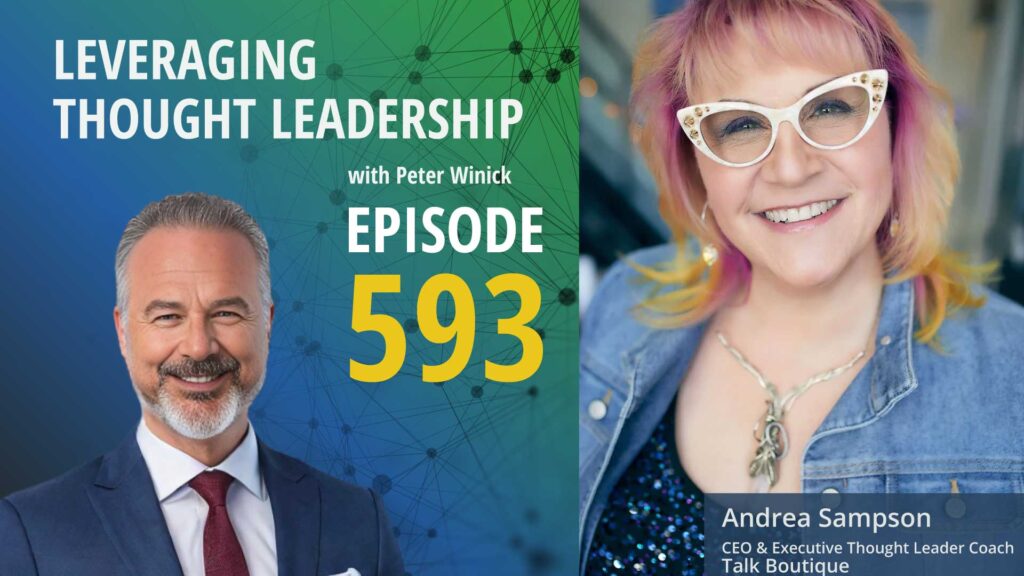
Why Your Core Message Matters More Than You Think
In this episode, Andrea Sampson discusses the importance of finding your core message and how to connect and engage your audience through it.
Today on Leveraging Thought Leadership, host Peter Winick sits down with Andrea Sampson, CEO and Executive Thought Leader Coach at Talk Boutique and creator of the Thought Leaders Academy. Andrea has a rich background with over 25 years in marketing and advertising. She shares how her journey from crafting TEDx talks to building a holistic platform for thought leadership shaped her unique approach to coaching and strategy.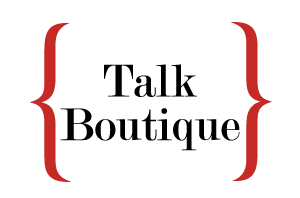
Andrea discusses the importance of understanding your core message as a thought leader. It’s not just about having a big idea but knowing what you stand for and why. This clarity helps you decide what opportunities to pursue and which ones to decline. For thought leaders, aligning your actions with your core message is essential. Andrea emphasizes that strategy isn’t a limitation but a necessary framework that guides creativity, much like a creative brief in advertising.
Peter and Andrea also explore the distinct differences between being a great keynote speaker and running a successful thought leadership business. Motivational speakers may inspire, but true thought leaders drive deeper understanding and actionable insights. Andrea highlights the need to simplify complex ideas so that audiences not only grasp them but are compelled to act.
The conversation shifts to current trends in thought leadership, particularly the effectiveness of giving away value—knowledge, experience, or content—as a strategy for engagement and growth. Andrea underscores the importance of thinking like a consumer and identifying your target audience’s needs.
Andrea also challenges the notion that thought leadership is a solo endeavor. Collaboration, not competition, is key. She urges thought leaders to work together, learn from one another, and focus on connection and engagement. It’s not the smartest thought leaders who are remembered, but those who can connect with their audience and make an impact.
Join Peter Winick and Andrea Sampson as they delve into these powerful insights that can elevate your thought leadership to the next level.
Align Your Actions with Your Core Message: As a thought leader, it’s crucial to define what you stand for and ensure all your decisions and strategies align with that core message. This clarity will help you decide which opportunities to pursue and which to decline, keeping your brand and message consistent and impactful.
Strategy Enhances Creativity, Not Restricts It: Contrary to popular belief, having a well-defined strategy does not limit creativity. Instead, it provides a framework that guides your creative efforts, ensuring your ideas and messages are focused, relevant, and effective in solving your audience’s problems.
Collaboration Over Competition: Thought leadership is not a solo endeavor. By collaborating with other thought leaders, you can expand your reach, enhance your message, and engage more deeply with your audience. Working together allows for shared learning and growth, creating a more impactful and memorable presence in the market.
If you know your core message, do you have discipline around it? Bill Sherman, COO of Thought Leadership Leverage, discussed the need for Message Discipline and the risks you take by not having it.
Transcript
Peter Winick And welcome, welcome, welcome. This is Peter Winick. I’m the founder and CEO at Thought Leadership Leverage. And you’re joining us on the podcast today, which is leveraging thought leadership. Today. My guest is Andrea Sampson. She is a former strategist and consultant and has spent over 25 years working in marketing and advertising, presenting and developing strategies for Fortune 100 companies. Now she’s moved, so she’s transitioned, and this is where her and I have been talking about lately. She’s four years ago. Andrea’s passion for ideas led her to TEDx Toronto, where she volunteered initially as a speaker coach, then as director of programing, and then ultimately as conference co-chair. She has created two entities. One is Talk Boutique, which is a speaker management, development and representation company, and then the other is Thought Leaders Academy. So, without further ado, welcome aboard, Andrea.
Andrea Sampson Thank you. Peter, I’m really, really excited to be here. And I think you’re the bio we sent. It was a little old because, it was not four years ago. It was almost ten years ago now. So.
Peter Winick Okay, so I’m going to do the math, and it say it’s six years old. Okay. Yeah.
Andrea Sampson I think that might have been an older one I apologize.
Peter Winick No worries. So, talking about the evolution, I mean, but it sounds like the journey and correct me if I’m wrong, is really starting on Ted X and then helping people develop their Ted talks and all their sort of other things to a more holistic platform with Thought Leader Academy. So give me the sense of like, who comes to you? And yeah, easy to do. What are you doing for your clients.
Andrea Sampson Yeah. So basically yes, I mean the journey from advertising to Ted to now thought leader coach has sort of been an interesting one in that in advertising, I was a strategist in a planner, and what I had to do was pull out, you know, sort of key consumer insights, that that is the through line through it all. Because as I moved into Talk Boutique and started creating a platform for speakers and thought leaders to be heard, that idea a through line of the key insight, happened in Ted. That’s what we call an idea and then a talk boutique. It is the core of what we do is developing out there core thought leadership and then aligning everything to it. So the transition hasn’t.
Peter Winick Let me do that. So stay there for a minute. There’s one of the things that that you and I are sort of, clearly aligned on is that in my work with authors and thought leaders and academics and such, you know, most of them, when I start to talk to them early on in conversations and such, are really operating without a strategy. Right? They confuse. And I was, you know, talk about confusing activity for productivity. They’re not lazy, you know, they’re smart, they’re passionate, they love what they’re doing. And they you know, the feeling is typically, well, I’ve got 28 projects going on. So clearly that’s my strategy. But a strategy. And you come out of sort of traditional strategy as do I. It’s really around who are you serving? How are you serving them? What’s the product roadmap, what’s the positioning? All those other things. And I think I’ve far too many thought leaders are really, really great at whether it’s the craft of speaking or they’re they’ve got great ideas, but they don’t pause and treat themselves as the, the business that they really are. A good bit.
Andrea Sampson Absolutely. In fact, you know, when I think about strategy, I always like to say strategy is the is knowing what to say no to right. That that’s the key. Right. And so as you think of yourself as a thought leader, you know, what do you say no to. What do you say yes to. Well. And what do you base that on? Well, it has to be based on that core strategy, that core idea. What is it that you stand for in the world and why do you stand for that? What is it that it is meeting somewhere deep inside of you that you are emotionally aligned to that, that that idea. And so, the when you have that define what that allows you to do is to say, well, I’ll be on that stage, but not that one, or I’ll write that book, but not that one, you know, because.
Peter Winick They they’re a second. Because I think that, you know, most thought leaders just defaults, which is, yes, they get asked to do something, write an article, be a podcast guest, come speak. And they’re so excited that people want to engage them and their ideas. And maybe it’s a little bit flattering to the ego. And I think part of what a good strategy does is give them the criteria to say, let me look at this opportunity. Let me sort of evaluate it through the lens of the strategy and say, actually, no, because a strategy is a living, breathing thing. It’s not. There’s a 20-page thing that’s got all these big ideas. It’s like, okay, I just got invited to do more things than I can possibly do. How do I, in a logical, rational way, say yes to things that are aligned with my goals? And by the way, strategy is, you know, it’s not it’s not ever done right. It’s always evolved it.
Andrea Sampson Many, many years ago when I was being taught strategy. You know, I was taught that, you know, your goal is your ends and the strategy is the means to get there, right. And so what are we trying to achieve. And so that strategy is always, you know, there are many, many different, you know, routes to get to an end. The question is which is the most direct and which is the one that’s going to allow you to build yourself as a thought leader in the most effective way. And so that’s really, you know, and I always say like it’s never, you know, right or wrong, it’s a closer to or further from your destination. Right. So it’s like, look, you can go many different ways. Some are going to take you away from that destination and to take you on the scenic route. Others are going to take you directly there. What do you want now? But all of that has to be coached by of course. What is that end goal and what is it that you stand for in order to get there? So, you know, I may choose to take the scenic route. Let’s just say coach, should I, you know, be on a little bit of a slower burn where I actually am testing out what I’m saying, testing out who I am, testing out what I’m showing up as I don’t want to have a million people that I’m talking to right in this moment, because I’m still figuring it all out. So I’ll go on the scenic route.
Peter Winick Yeah. Let me ask you this. So one of the things that I. Have found is that sometimes people thought leaders avoid the development of the strategy, and then even if they don’t avoid the development, resist the implementation because they fear it takes away their freedom, their creativity and blah, blah, blah. Right. And I think that actually having some constraints and some boundaries is a good thing. Number one. And number two, a good strategy has to allow room for play, right? Like, hey, there’s serendipity is going to happen. And, you know, there’s this thing that I’m thinking about that’s not totally aligned with the strategy. And like, yeah, go spend a couple hours a week playing with that and see what that turns into. It doesn’t mean that you’ve turned what you love into a job that you hate, because I think that’s there’s an unspoken fear of that.
Andrea Sampson You know, when I worked in advertising, you know, one of the things that we always had to do is we had to create a creative brief for our creative teams, right? So our writers and art directors and why did we have to create a creative brief? Why wouldn’t we have just said, you know, we’re working with XYZ brand. Here’s the brand. Go ahead and create. There’s a reason why we created a creative brief. Well, a number one is there was an outcome we were trying to get to. But number two, have you ever tried to create from a blank sheet of paper.
Peter Winick What’s the worst.
Andrea Sampson Card? That is like you need boundaries. You need something to react to. So when we look at strategies as a way to kind of Hamas in, to give us the ability to have something to go, oh, that’s the problem solving for and that’s actually the key question, what is the problem you’re solving for? Because as thought leaders, we actually are problem solvers. And when you’re a creative problem solver, you’re really good at it because no matter what somebody throws at you, you’re able to find a solution.
Peter Winick Right? And if you’re not a problem solver, there’s a subset of, you know, keynote speakers that are just entertainment. And that’s fine, but it’s just entertainment, right?
Andrea Sampson I wouldn’t call that a thought leader.
Peter Winick I know. Exactly right. So let’s play with this for a little bit. I think that there’s, you know, lots of folks get into keynote speaking because it’s cool and it’s fun and it’s sexy and they love it. Like, where else do you get to go to work for 45 minutes, and your day ends in a standing ovation. Like doesn’t like it’s kind of cool, right? But I think some of the things that make someone a great keynote are actually are not what make them a great thought leader business. Right. So he know there is more, the attributes of the personality, the charisma, the, the, you know, sort of the traits of that, you know, your personal story, whatever. And then when you move into a more robust thought leadership business, what are you really doing? Well, you’re providing a specific set of people, right, with some tools and some frameworks and some models and some methods to develop some capabilities and or change behaviors that drive real outcomes. And that’s a very different standard to be held to. Can you talk about the difference of the two because you’re clearly on both sides of that.
Andrea Sampson Yeah. I mean, to be honest, like, you know, when we look at successful keynotes and like somebody who you would call like a motivational speaker, I actually don’t work with them a whole lot because the reality is, is that what they’re doing is they’re going out and they’re really staying in that place of inspiration right where it’s like, I’m going to inspire you to be more of who you are. I go deeper in terms of the individuals that I work with where yes, there’s inspiration, of course, but what we’re doing is trying to create understanding, and that’s a different thing. And I think that’s what you’re getting at, you know.
Peter Winick And what I was getting at is the motivational speakers put those to the side, because I think there’s a place for those. We don’t really work with those either. But that’s really the sugar I like. You know, the objective of the organization is, you know, a company bringing you in. They’ve had a great year or a bad year or whatever. They want people to feel really good and, you know, blah, blah, blah, blah. The next day they’re going to remember maybe a joke or two or something like that, but they’re not going to apply the framework company wholly for their work. And that’s okay. It’s just a different standard, just a different set.
Andrea Sampson Of yeah, of course. Yeah, of course. But I mean, on a thought leader standpoint, the key to a good thought leader keynote is understanding. You know, I like to say it’s simplicity on the far side of complexity. When you’ve got a good when you’ve got a good thought leader there on that simplicity side, they make it seem so simple and they’re explaining it to you in such a way where you’re like, oh my God, I get it. And I want to go back and employ that. And that’s where those frameworks come from, right? Yeah. They’ve done all the thinking. But what they’ve also done, and I think what’s really powerful about it is that they haven’t created thought for the sake of thought. They’ve created it to solve a problem. So maybe I’m solving climate change. You know, that’s a big ask. Yeah. Well, you know, okay, well, maybe I’ve spent my entire career in climate change, and I now need you to understand. 30 years of work in 20 minutes. How do I do that? Right. And that is the key to actually a thought leader doing. A really effective keynote is when they’re able to do that, and the way they do that is actually, I think, in three things. One, having a core idea, what is it that you truly believe in? Stand by. Number two, having a metaphor that can hold that idea in such a way that I’m like, oh, I get that because I understand that metaphor. And number three, having an actionable framework that will actually help people to employ that idea in a way that they can use in their everyday. So they’re not just walking away with a good feeling, the sugar high of a motivational keynote, or walking away with something that they can use and an understanding that they can share.
Peter Winick And if you’re enjoying this episode of Leveraging Thought Leadership, please make sure to subscribe. If you’d like to help spread the word about our podcast, please leave a five-star review at ratethispodcast.com/ltl and share it with your friends. We’re available on Apple Podcasts and on all major listening apps as well as at thought leadership leverage.com, forward slash podcast.
Peter Winick And from a business standpoint, I think that, you know, the one of the greatest things about, you know, as a business is its paid business development. And I absolutely love virtual back of the room that old no whatever. But I mean, if you’re if you have a proper strategy in place, what the keynote should do is generate demand and interest into derivative offerings, assuming you have them, which you should of your products, offerings and solutions that the audience, you know, their organization, the sponsor or whatever could bring on. Right. So all in all, the keynote is going to do is I always talk about it’s about awareness, engagement and giving people like Hmhm. That’s pretty cool. Tell me more. Right. But it’s not held to the standard of Wow, because we brought in someone in our organization on innovation. We’re now an innovative organization. That’s a ridiculous statement. Right?
Andrea Sampson So, right. What are you.
Peter Winick Seeing on the business side, the types of modalities and things and offerings and solutions that some of your thought leaders are putting out to their clients successfully today?
Andrea Sampson So I think I think it’s a challenge right now because, you know, I think in general people are overloaded with those types of things. However, what I am seeing that is working is where you’re doing something as a thought leader, where you’re giving something away in terms of your knowledge, your experience, your content. Give away content, give it away as much as you possibly can, because that’s the piece that comes back to you. And so that works and continues to work. You know, it’s not a new thing, but it’s an old thing that is being used in a new way because it used to be content was, well, I’ll give you my book. Yeah, yeah. Okay. Well no one’s I mean, not that people are necessarily not reading books, but they’re not reading them in the same way they used to. Yeah. You know, we’re using them as tools now as opposed to I’m reading cover to cover. So what you need to do is, is take what’s the truncated version of your book? Is it a webinar? Is it a what’s the thing you can give to people that they want that they understand. So you’re on a stage, you’re giving a keynote. That keynote is, you know, in some way connecting with that audience. And now, okay, now what do I give you? I give you my story with my idea inside of it. And I’m going to give you my framework, which you’re going to actually now use. And that becomes the content you’re giving away. Here’s, here’s how I came to it. Now you go ahead and use it.
Peter Winick What specifically on the commercial side I’ll give you some examples. So there are ways to. One is you have to have a in my opinion, a very refined definition of who your target market is from an avatar standpoint. Right. And that’s not just demographic but there’s psychographic, right? Yeah. Then you need to say you need to understand how do they choose to consume content. And content consumption goes across the spectrum from free. Watch your video. Look at this. Read this article for you know, to paid ebook to enterprise wide solutions, which could be things like validated assessment tools, pull down libraries, training, a training certification, video basic. That’s the stuff that the to me is a challenge for thought leaders to sort of figure out how to properly move their intellectual property, those modalities, because they each have their own rules.
Andrea Sampson Yeah, those are small undertakings. Those are big undertakings. We get those types of things. But in terms of like the like, so if you go across the, you know, like the reality is as thought leaders and I think this is one of the biggest challenges for most of us is we have to think and act like a consumer while being the thought leader these way to think about who’s actually consuming it. And so doing some sort of a customer journey, where are they seeing your content? What type of content should they be seeing in? In that in that context.
Peter Winick But let’s take that back to strategy. So again, in my conversations with folks all the time, I’ll say, well, you know, not who’s your competition from a Coke and Pepsi perspective, but are you even aware of what other leaders are doing from a business standpoint? And I’m shocked, like, you know, if I if I bump into somebody that’s in pick an industry insurance consumer package can say, oh, what’s going on in your industry? What are the trends happening? What are your competition doing? What are you doing differently? Whatever. Everyone that’s successful can answer those things and also answer the challenges they have. Most thought leaders are so stuck in their own myopic, you know, little world. They’re like, wait, but why would I read my competitor’s book? Or why would I look at what their, you know, because you can learn from them, like who’s. And then sometimes there’s this jealousy, oh, well, so-and-so who’s got this, you know, huge platform and they’ve got a big this, you know, my stuff’s better. Okay. Yeah, that’s all great. But what can you learn from others that are commercially successful? And what’s the delta between where you are and where you need to start to be at?
Andrea Sampson And I would actually even add to that is go. And who can you partner with so that you’re in front of their audiences and you’re not you’re learning from them because it’s like, look, you know, we can look at competition or we can look at co-op petition. Yeah. And I think as thought leaders, we’ve got to constantly be looking at how we are partnering up and helping each other, even when we’re competing for the same audience, because the reality is we’re not. To your point about who is your audience? Well, my audience is going to be I mean, look, you and I both work in the thought leadership role, Peter. Like, you know, we could I could look at you and go, oh my God, he’s my competition. I know we have different audiences. I know that you know that. And we also know that there’s enough for both of us. We can build each other. And so when we look at it through that lens and when we are helping each other through that lens, we’re all going to win. And it shifts the conversation. Now, the consumer, the person who’s buying what we’re selling is looking at us and going, wow, they’re really smart. They. Yeah.
Peter Winick Well, I know this is sometimes a bit foreign for thought leaders to grasp their head around because they’re the ones they’re the name on the book. They’re the name on the stage. They’re the they are the one. So it doesn’t mean that they’re not collaborative or team oriented or whatever, but they like it doesn’t strike them to say, wait a minute, let’s do this. Like, think about it. They’re not, you know, they’re golfers. They’re not baseball players, right? There’s right. It’s not a team sport. And it’s like, wait a minute, who can you partner with? Maybe you always say, well, who’s chocolate and who’s peanut butter? If someone’s got a great audience and distribution like, what don’t you have? I don’t want to say I don’t have marketing, I don’t distribute, okay. What do you have great content. Well, who’s got an audience that would love your stuff? Figure out a way right to partner. Which sounds idealistic, but I also think that when you figure out ways that are aligned with your product path, that works as well. Like if you have digital product, for example, there’s plenty of margin to share, margin to someone that you partner with to say.
Andrea Sampson Hey, who really.
Peter Winick Put my tools in front of your people? And I can give you access exchange or give them like there’s lots of cool ways to do that, but I think some of that is just a mindset shift to say, wait, it’s not a solo sport like this.
Andrea Sampson And but I think, I think that is the key, right? I think thought leadership, like it has traditionally been a solo sport, and it has been a place where you have to be Uber smart and Uber data and fact driven. And what’s happening is we’re shifting to go, wait a minute. There’s a lot of smart people out there like we are live in a world. And you and I both know this because we work with really, really smart people all the time. Yeah, but it’s not smart that gets remembered. It’s people who can engage, connect and who can be understood. That’s what gets remembered. And if you’re struggling to engage and connect A, you have to look at your message, your strategy and go, what is it that you’re saying that people don’t understand? And then B, how can you learn from the people around you and how can you connect in, you know, when I when I worked with Singularity University, I mean, you know, and we continue to work with them. But what I love about ASU is, you know, it is Uber, Uber smart people all over the world. Yeah. You bring them all together under one platform and we put them on the same stage. And we get people who are talking the exact same thing in completely different ways. You know, climate change is a good example of it, where everybody’s got a different view of what’s really happening, where we’re putting them, you know, together. We’re letting them debate it.
Peter Winick Yeah. Yeah.
Andrea Sampson Why? Because it is really important for the consumer to hear the debate. But B it’s really important for the thought leaders to be a part of the debate, you know, and to be seen to know each other, to know the platforms and then to have their content ready to go. So when that consumer says, I need that, I need to know more about it, they’re ready to go. And they. Can come in and do something directly, whether, you know, depending on what side of the debate on doesn’t matter, doesn’t matter.
Peter Winick Doesn’t matter.
Andrea Sampson Fact of the matter is they were together and the togetherness is what creates a deeper understanding. And that’s key.
Peter Winick Yeah. Love it. Well, this has been fantastic. You and I can talk for hours. I appreciate you coming on board and sharing. Sharing your thoughts. This is great stuff. Thank you. Andrea.
Andrea Sampson Oh, well, thank you so much, Peter. This has been so much fun. I really appreciate it.
Peter Winick To learn more about Thought Leadership Leverage, please visit our website at ThoughtLeadershipLeverage.com to reach me directly. Feel free to email me at Peter at ThoughtLeadershipLeverage.com, and please subscribe to Leveraging Thought Leadership on iTunes or your favorite podcast app to get your weekly episode automatically.



